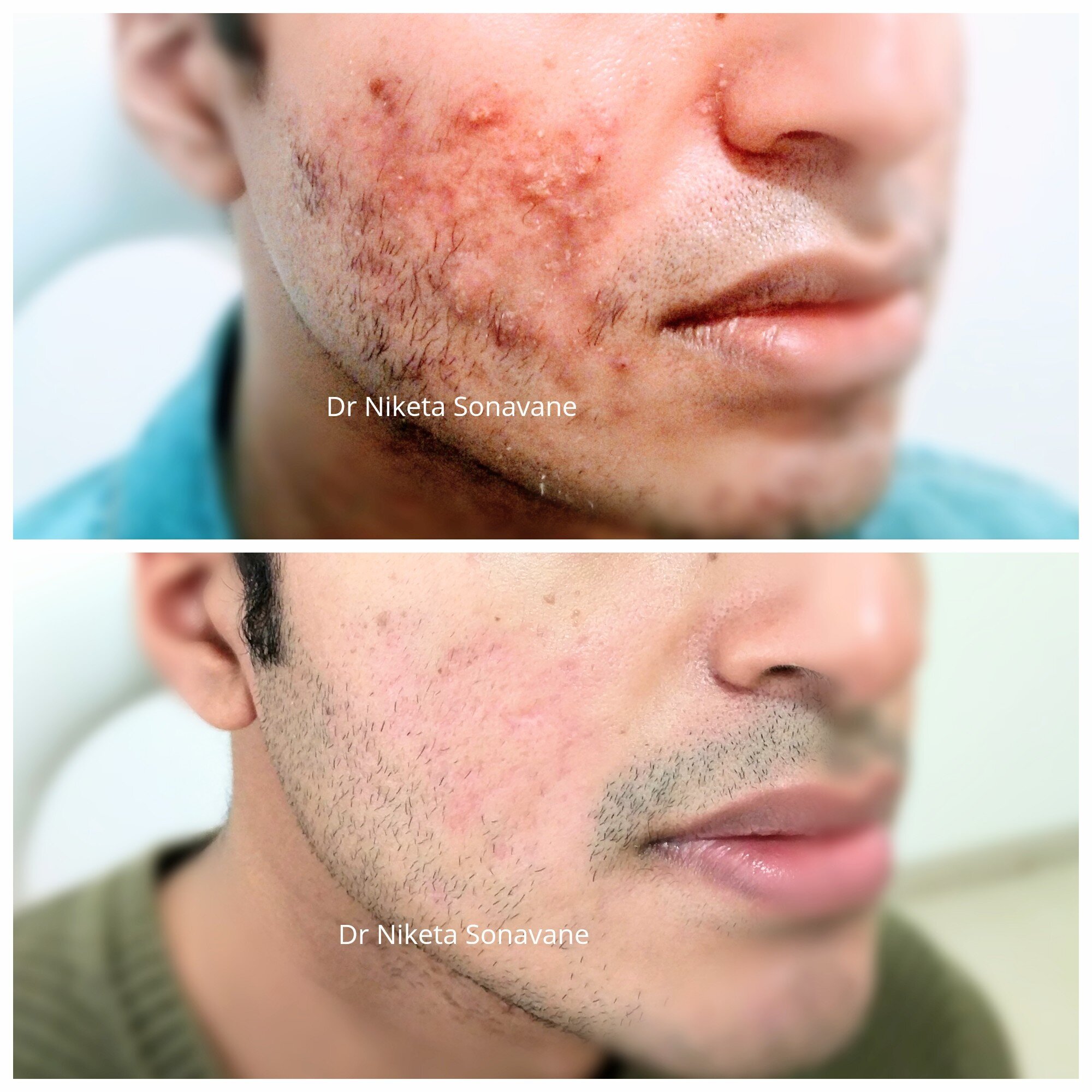Comprehensive Acne and Acne Scars Treatment: Recover Your Skin's Natural Beauty
Comprehensive Acne and Acne Scars Treatment: Recover Your Skin's Natural Beauty
Blog Article
Checking Out Skin Problems: Dealing With and recognizing Acne Scars for Healthier Skin
Acne marks stand for a significant concern for people seeking to preserve healthy skin, as they can affect both appearance and self-esteem. Recognizing the numerous kinds of scars, from atrophic to hypertrophic, is necessary for identifying suitable treatment choices.
Understanding Acne Scars

The body's all-natural recovery process can cause either atrophic marks, which look like anxieties in the skin, or hypertrophic marks, which are elevated and result from overflow of collagen. Additionally, the psychological toll of acne scars need to not be ignored; many individuals report sensations of shame, anxiety, and decreased self-worth. This emotional concern can affect social interactions and general quality of life.
Attending to acne marks needs a comprehensive understanding of their development and influence. Understanding of the possibility for lasting consequences related to without treatment marks can encourage people to seek appropriate treatments. Early intervention and reliable administration strategies can significantly improve skin look and improve psychological resilience, stressing the relevance of recognizing the intricacies surrounding acne scars.
Sorts Of Acne Scars
Acne marks can be classified into distinct kinds, each showing unique qualities and needing details therapy approaches. acne scars treatment. The key kinds of acne marks consist of atrophic, hypertrophic, and keloid scars

Hypertrophic scars, on the other hand, are elevated over the skin degree and are the result of extreme collagen manufacturing throughout the healing procedure. They typically remain within the boundaries of the initial acne sore. Keloid marks are similar but prolong beyond the original injury website, developing larger, raised locations that can be uncomfortable or scratchy.
Comprehending these kinds of marks is vital for choosing suitable treatment options. Various marks might respond far better to certain therapies, such as laser treatments, fillers, or medical treatments, emphasizing the relevance of a tailored method to acne mark monitoring.
Determining Your Scars
Acne marks generally drop into 2 classifications: hypertrophic and atrophic marks. These can better be categorized right into ice-pick scars, boxcar marks, and rolling scars, each displaying unique features and needing various approaches for analysis.
Hypertrophic scars, on the other hand, are elevated and occur as a result of excessive collagen manufacturing throughout the healing procedure. Recognizing the details attributes of your marks-- such as deepness, structure, and size-- is important for correct recognition (acne scars). In addition, take into consideration the circulation of marks throughout your skin, as this can suggest the intensity and duration of the acne condition
Engaging with a skin specialist can provide important insights into the nature of your marks, aiding in the differentiation between various kinds. A detailed understanding of your marks will eventually result in an extra tailored and effective therapy strategy, guaranteeing a clearer and much healthier complexion.
Therapy Options Available
Recognizing the particular kind of acne scars present on your skin lays the foundation for exploring effective treatment choices. Typical sorts of acne marks include atrophic (depressed), hypertrophic (increased), and post-inflammatory erythema.
For atrophic marks, options such as chemical peels, microneedling, and laser resurfacing are extensively utilized. Chemical peels off make use of acids to remove the external layer of skin, advertising new cell development.
Hypertrophic scars can be treated with corticosteroid shots to squash the scar or laser therapy to reduce soreness and boost appearance. Silicone gel sheets and pressure dressings might additionally help in taking the original source care of elevated scars.
In addition, facial fillers can briefly complete clinical depressions from atrophic marks, while medical excision might be ideal for extreme instances. Each treatment option has its benefits and factors to consider, making it necessary to talk to a dermatologist. They can provide tailored referrals based on the type and intensity of your scars, as well as your skin kind and total wellness.
Tips for Prevention
Reliable prevention techniques can dramatically lower the chance of creating acne marks. The very first step is to maintain a consistent skincare routine that includes mild cleansing, peeling, and moisturizing. Making use of non-comedogenic products assists protect against clogged up pores, which can aggravate acne. In addition, integrating topical therapies including salicylic acid or benzoyl peroxide can successfully decrease and take care of breakouts swelling.
Staying clear of the desire to pop or pick acne lesions is crucial, as this can bring about much deeper skin damage and boost the threat of scarring. Instead, consider utilizing a cold compress or over the counter therapies to reduce swelling and inflammation.
Sun defense is one more essential element of prevention; ultraviolet (UV) rays can dim marks and prevent the healing process. Applying a broad-spectrum sun block with at least SPF 30 daily can protect the skin and promote even healing.
Last but not least, maintaining a well balanced diet abundant in vitamins, minerals, and anti-oxidants sustains skin health and recovery. Staying moisturized and managing stress degrees can likewise play a considerable duty in minimizing acne flare-ups. By applying these strategies, individuals can significantly lessen their opportunities of establishing acne scars.
Verdict
To conclude, understanding and determining acne scars is essential for efficient treatment and achieving healthier skin. Numerous types of acne marks, including atrophic and hypertrophic scars, necessitate particular treatments customized to specific needs. Treatment options range from chemical peels and microneedling to corticosteroid injections, emphasizing the value of speaking with a dermatologist. Furthermore, embracing a mild skin care routine and shielding the skin from UV direct exposure can significantly contribute to the prevention of additional scarring and general skin wellness.
The body's natural healing procedure can result in either atrophic scars, which you could try here appear as depressions in the skin, or hypertrophic marks, which are elevated and result from overproduction of collagen. They are additional separated into 3 subtypes: ice pick marks, boxcar scars, and rolling scars. Acne scars usually drop into two classifications: atrophic and hypertrophic marks. These can even more be categorized into ice-pick scars, boxcar marks, and rolling scars, my company each exhibiting distinct attributes and calling for various strategies for evaluation.
Different types of acne marks, consisting of atrophic and hypertrophic scars, require details interventions tailored to private demands.
Report this page